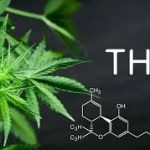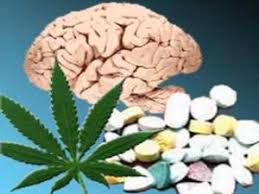Cannabinoids are psychoactive substances produced by various plants, in particular from cannabis sativa, known for its recreational use. Cannabis contains hundreds of chemicals, of which about sixty are classified as cannabinoids. Chemically, icannabinoids are terpenoids , that is, non-polar molecules capable of interacting with specific receptors present in various regions of the brain. Therefore, cannabinoids are present in marijuana and hashish, the main active component of which is THC (tetra-hydro-cannabinol). These substances are known as recreational drugs in all parts of the world. In some countries the possession and use of cannabis derivatives has been made illegal, but in other countries there is a great deal of tolerance in this area and small quantities of the aforementioned drugs are allowed to possess and use.

Cannabis sativa, if used as a drug, is usually smoked, sometimes swallowed. The effects are quick when smoked and last up to four hours. Among them, the most common are: well-being, euphoria. An increase in appetite is also seen among the effects, and for this reason all cannabinoids are being studied to treat conditions such as anorexia.
The use of these substances also has possible negative effects, in fact, dissociation of ideas, confusion of consciousness, changes in sensory perception, slowing down of time perception, loss of attention, anxiety, panic, hallucinations and paranoia can occur.
The identification of cannabinoid receptors is historically very recent and was based on the fact that prior to their discovery, these psychoactive substances had no known purpose. Later, there was also the discovery of endogenous ligands for these receptors, called endocannabinoids. In the brain, endocannabinoids act as neuromodulators. All endocannabinoids are derived from polyunsaturated fatty acids. The endocannabinoids identified so far include anandamide, N-arachidonoyldopamine, and arachidonoylglycerol.
The term phytocannabinoids is currently used to refer to naturally occurring plant and endocannabinoid compounds. for natural human compounds – endogenous ligands of cannabinoid receptors. To date, nearly one hundred cannabinoids have been discovered, and there are several laboratories producing synthetic cannabinoids .
Unlike most herbal medicines, including opioids, cocaine, nicotine and caffeine, cannabinoids do not contain nitrogen and are therefore not alkaloids . Nitrogen is an atom that polarizes the molecule, therefore, these substances have low polarity and are able to easily pass the blood-brain barrier and act on receptors in the brain.
Dronabinol is an international term for THC, which, as mentioned, is the main psychoactive principle of cannabis. In 1985, the US Food and Drug Administration (FDA) approved the sale of diMarinol capsules containing dronabinol for the treatment of nausea and vomiting associated with chemotherapy. In 1992, the drug was also approved for the treatment of anorexia nervosa associated with weight loss in AIDS patients. Cannabinoid preparations are not yet sold in Italy .
Cannabinoid use by athletes is commonly used for recreational purposes, since these substances do not have an ergogenic effect, as they cause a loss of concentration and, therefore, reduce the athlete’s ability. According to some studies (Renaud), these substances have quite an ergolytic effect, as the study in question shows that smoking marijuana reduced the performance of 12 subjects who, when tested on a bicycle 10 minutes after smoking, reduced exhaustion time to about 15 minutes compared to when they weren’t smoking drugs. Even more damaging are the effects of pre-competition cannabinoid use, where attention is as important as motor attention.

In addition, some studies show that regular cannabis use decreases testosterone production, a fundamental hormone for maintaining strength and muscle mass. Other possible side effects resulting from routine cannabinoid use are breathing problems due to lung damage and immunosuppression, which can make athletes more susceptible to infections.
The only usefulness of these substances for the athlete is determined by the anxiolytic effect, which allows to reduce pre-competitive stress.
Cannabinoids are metabolized by the body and excreted in urine , consumption of these substances is tracked for 4/5 days from ‘occasional consumption and up to 30 days after ingestion for regular users. The Anti-Doping Committee still evaluates the incidence of secondhand smoke (when not a person smokes, but people close to him) for the presence of metabolites in the urine.

Over the years, there has been a progressive increase in cannabis use by athletes , as cases of positive attitudes towards tests become more numerous, this is probably due to the continued use of these drugs as a form of socialization.
